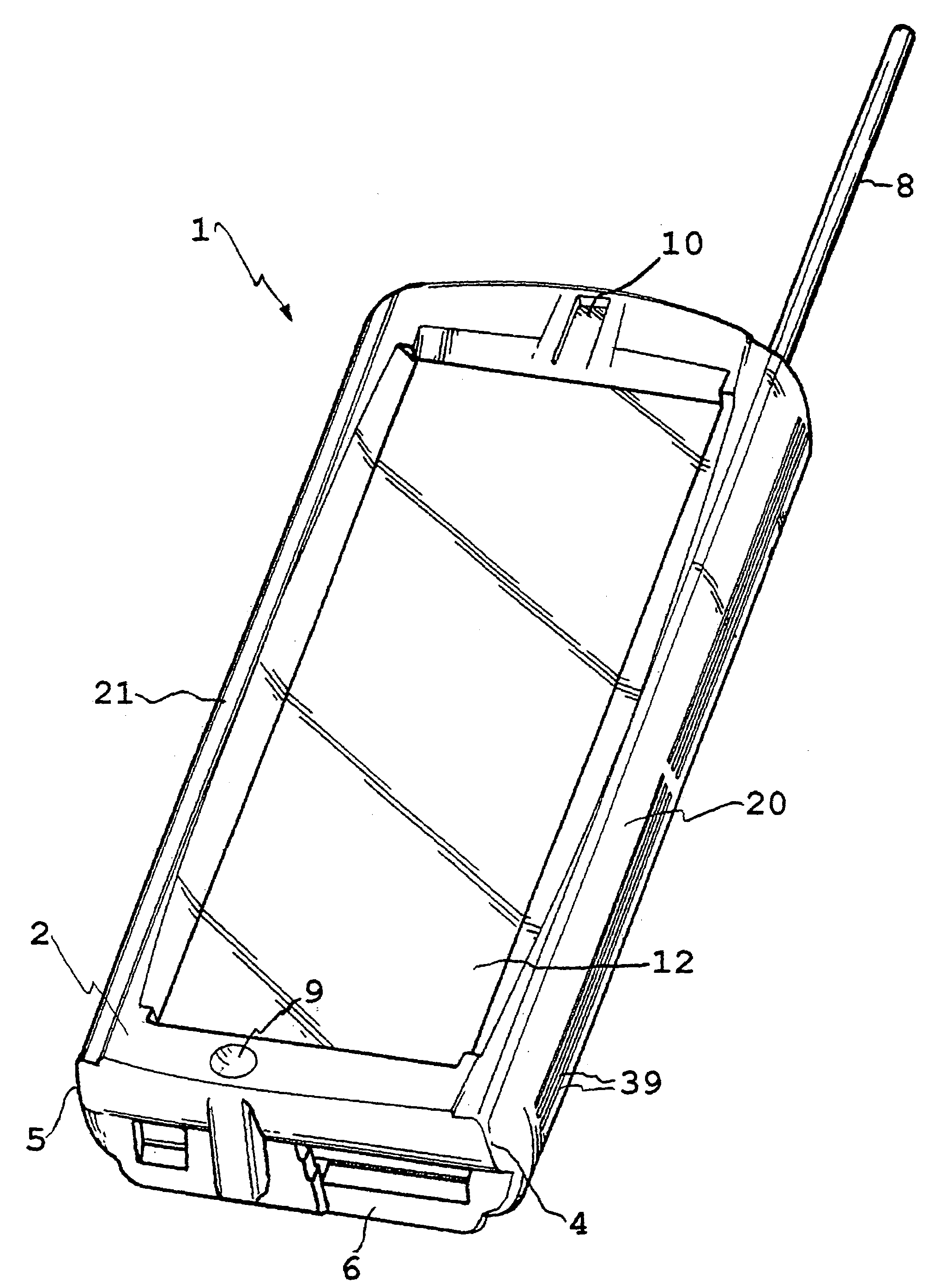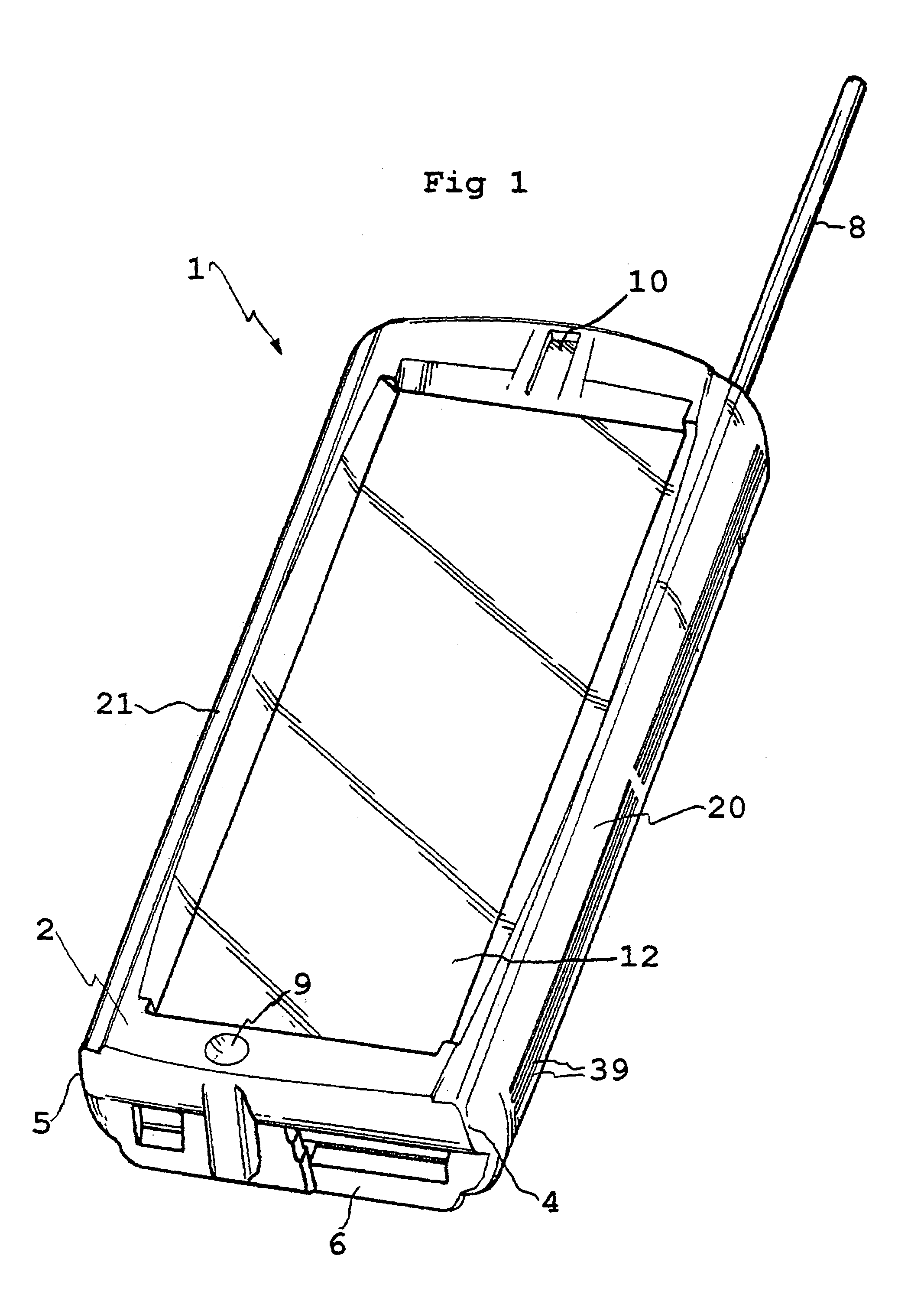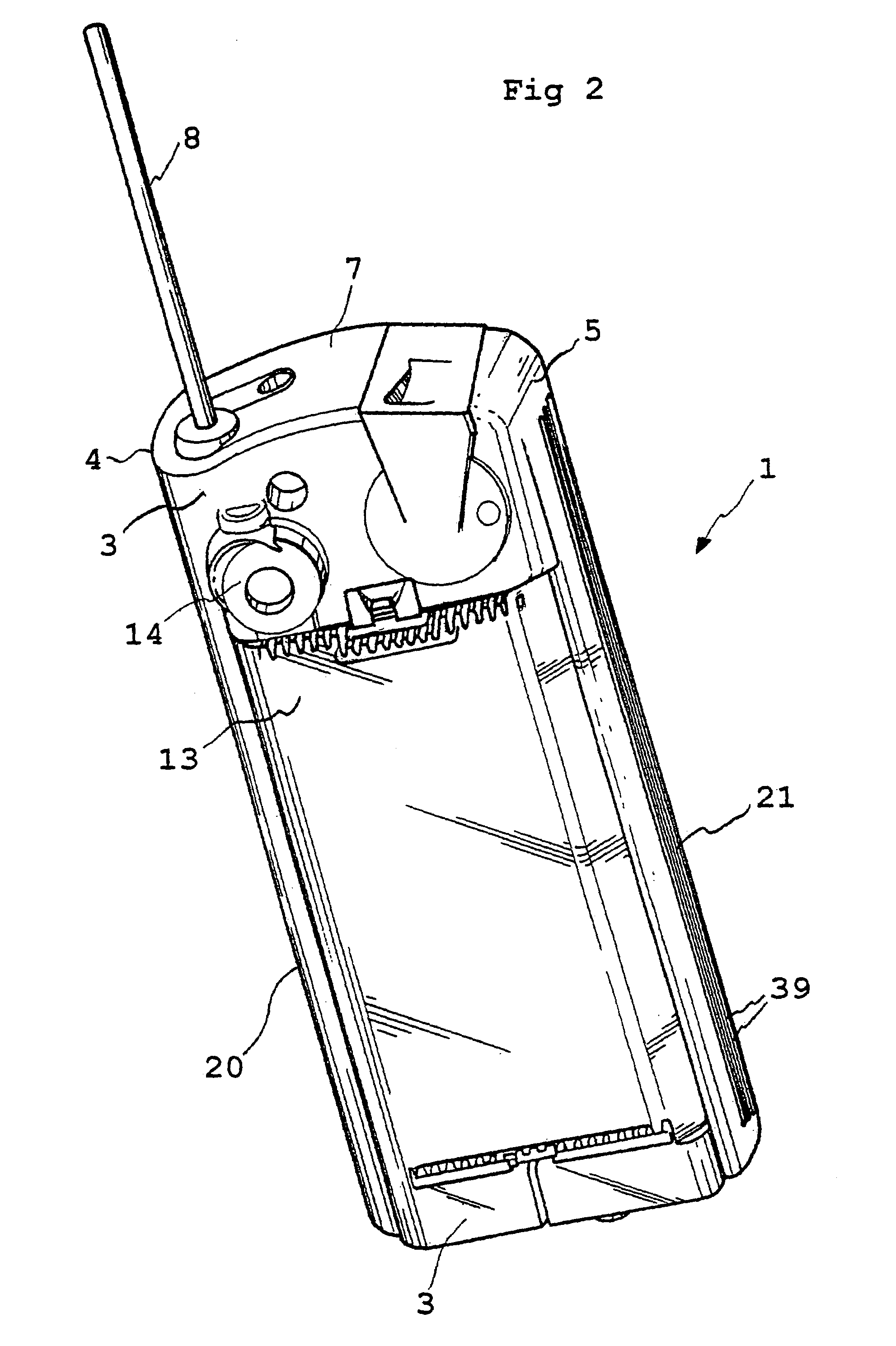Handheld or pocketsized electronic apparatus and hand-controlled input device
a technology of electronic equipment and input devices, which is applied in the field of hand-held or pocket-sized electronic equipment, can solve the problems of difficult glass or plastic supply, space problems, and touchscreen impair the contrast and resolution of the picture, and achieve the effects of reducing contact area, high positioning accuracy, and small siz
- Summary
- Abstract
- Description
- Claims
- Application Information
AI Technical Summary
Benefits of technology
Problems solved by technology
Method used
Image
Examples
Embodiment Construction
[0057]A combined mobile telephone / web browser 1 shown in FIGS. 1 and 2 has a front side 2, a rear side 3, two opposite edge sides 4, 5, a bottom side 6 and a top side 7. The mobile telephone 1 is provided with communication means comprising an aerial 8, a microphone 9, a loud-speaker 10 and electronic transceiver circuits, not shown, arranged internally in the apparatus. The latter circuits may be of conventional type and are therefore not described further in detail. A display unit with a rectangular display area 12 is arranged on the front side 2 and a battery compartment 13 is arranged on the rear side 3. Unlike conventional mobile telephones, the display area 12 of the display unit takes up almost the entire front side 2. Only two small areas above and below the display area 12 are free for the loudspeaker 10 and the microphone 9, respectively. The mobile telephone / web browser 1 also comprises electronic circuits (not shown) necessary for various functions, such as processors, d...
PUM
 Login to View More
Login to View More Abstract
Description
Claims
Application Information
 Login to View More
Login to View More - R&D
- Intellectual Property
- Life Sciences
- Materials
- Tech Scout
- Unparalleled Data Quality
- Higher Quality Content
- 60% Fewer Hallucinations
Browse by: Latest US Patents, China's latest patents, Technical Efficacy Thesaurus, Application Domain, Technology Topic, Popular Technical Reports.
© 2025 PatSnap. All rights reserved.Legal|Privacy policy|Modern Slavery Act Transparency Statement|Sitemap|About US| Contact US: help@patsnap.com



